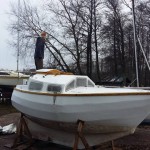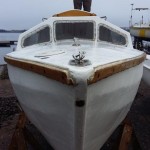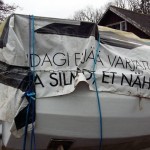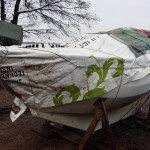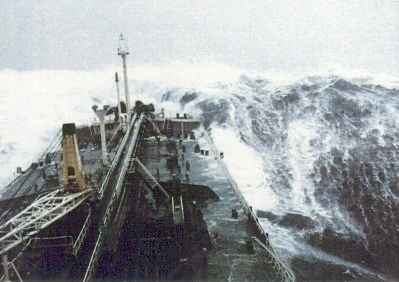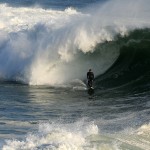Hello!
A few days ago Artur and I went to the lake to cover the boat for winter. We did so with the help of an old commercial poster, rope, anchor chain, a few twigs of birch and clear packing tape. The results of this can briefly described like this:
- Artur standing on Kvark, checking out the situation.
- Looking good!
- And half an hour later there she was, packed tightly into a thick plastic canvas. The text on the cover says “Nothing will remain hidden, open your eyes to see”. Well, she will stay hidden until spring.
- We did some practical problem solving to tighten the ropes. Anchor chain was one of the aids. We tightened ropes by twisting them onto a birch twig.
Well, good! I uploaded the pictures into my Facebook gallery. Half an hour later I started receiving messages about the critical mistake we did: wrapped the boat tightly into plastic. Turns out that this has ruined quite many good boats. Water vapour needs airflow to escape from below the canvas. Otherwise it will seep into microcracks on the hull and start bulging up the plywood. The other problem is that this heavy type of tarp will rub and wear on the paintjob of the boat. Elastic ropes will come loose and so will the tarp. Especially over the winter, since it tends to be a windy season.
Ideally, we want something like this:

Image courtesy: www.shipshapecanvas.com
That is – at best a large free space between the deck and the tarp. We will fix the problem in a week. A good way to hold the tarp down are water canisters.
Will write a season recap soon, with a big sailing gallery!
Cheers,
Uku

